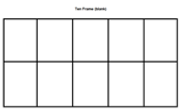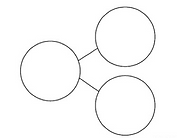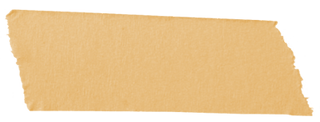KINDERGARTEN > K.NBT.1 > TEACHER GUIDE
TEACHER GUIDE TO CLARIFICATION
K.NBT.1
Work with numbers 11-19 to gain foundations for place value.
K.NBT.1 Compose and decompose numbers from 11 to 19 into ten ones and some further ones, e.g., by using objects or drawings, and record each composition or decomposition by a drawing or equation (e.g., 18=10 + 8); understand that these numbers are composed of ten ones and one, two, three, four, five, six, seven, eight, or nine ones.
Place Value
Students should have significant exposure to ten-frames, , and place value cards.
Ten Frames:
Number Bonds:
Place Value Cards:
Free Printable Place Value Cards: http://www.senteacher.org/worksheet/49/PlaceValue.html
Kindergarteners need to understand the idea of a ten so they can develop the strategy of adding onto 10 to add within 20 in Grade 1. Students need to construct their own base-ten ideas about quantities and their symbols by connecting to counting by ones. They should use a variety of manipulatives to model and connect equivalent representations for the numbers 11 to19. For instance, to represent 13, students can count by ones and show 13 beans. They can anchor to five and show one group of 5 beans and 8 beans or anchor to ten and show one group of 10 beans and 3 beans. Students need to eventually see a ten as different from 10 ones.
After the students are familiar with counting up to 19 objects by ones, have them explore different ways to group the objects that will make counting easier. Have them estimate before they count and group. Discuss their groupings and lead students to conclude that grouping by ten is desirable. 10 ones make 1 ten makes students wonder how something that means a lot of things can be one thing. Students need to first use groupable materials to represent numbers 11 and 19 because a group of ten such as a bundle of 10 straws or a cup of 10 beans makes more sense than a ten in pre-grouped materials. They need to see that there are 10 single objects represented on the item for ten in pre-grouped materials, such as the rod in base-ten blocks. Students need to learn to attach words to materials and groups and understand what they represent. Eventually, they need to see the rod as a ten that they did not group themselves.
Students should impose their base-ten concepts on a model made from groupable and pre-groupable materials. Students can transition from groupable to pre-groupable materials by leaving a group of ten intact to be reused as a pre-grouped item. When using pre-grouped materials, students should reflect on the ten-to-one relationships in the materials, such as the “tenness” of the rod in base-ten blocks. After many experiences with pre-grouped materials, students can use dots and a stick (one tally mark) to record singles and a ten. Kindergartners should use proportional base-gen models, where a group often is physically 10 times larger than the model for one. Non-proportional models such as an abacus and money should not be used at this grade level. (Exception: penny can be used to for counting, grouping, etc. to represent one, the nickel can be used when working with 5-frames as a representation of five, and the dime as a representation of the 10 frame).
Encourage students to use base-ten language to describe quantities between 11 and 19. At the beginning, students do not need to use ones for the singles. Some of the base-ten language that is acceptable for describing quantities such as 18 includes one ten and eight, a bundle and eight, a rod and 8 singles and ten and eight more. Write the horizontal equation 18=10 + 8 and connect it to base-ten language. Encourage, but do not require, students to write equations to represent quantities. Students have difficulty with ten as a singular word that means 10 things. For many students, the understanding that a group of 10 things can be replaced by a single object and they both represent 10 is confusing.
Kansas Association of Teachers of Mathematics (KATM) Flipbooks.
Questions or to send feedback: melisa@ksu.edu. Retrieved from Kindergarten Flip Book.

Students should begin working with 5-frames and then move on to ten-frames




Place Value Cards for Kindergarten will only include tens and ones.

Coherence and Connections: Need to Know
Grade Level
Grade Above
K.OA.3
K.NBT.1
1.NBT.2
In Kindergarten, teachers help children lay the foundation for understanding the base-ten system by drawing special attention to 10. Children learn to view the whole numbers 11 through 19 as ten ones and some more ones.

In Kindergarten 13 is 1 set of ten ones and 3 more ones.
In 1st Grade 13 is 1 ten and 3 more ones.
Be careful of the difference!
Children use objects, math drawings*, and equations to describe, explore, and explain how the “teen numbers,” the counting numbers from 11 through 19, are ten ones and some more ones. Children can count out a given teen number of objects, e.g., 12, and group the objects to see the ten ones and the two ones. It is also helpful to structure the ten ones into patterns that can be seen as ten objects, such as two fives.
A difficulty in the English-speaking world is the words for teens numbers do not make their base-ten meanings evident. For example, “eleven” and “twelve” do not sound like “ten and one” and “ten and two”. The numbers “thirteen,…, nineteen” reverse the order of the ones and tens digits by saying the ones digit first. Also, “teen” must be interpreted as meaning “ten” and the prefixes “thir” and “fif” do not clearly say “three” and “five”.
The numerals 11,12,13,…,19 need special attention for children to understand them. The first nine numerals 1,…,9 and 0 are essentially arbitrary marks. These same marks are used again to represent larger numbers. Children need to learn the differences in the ways these marks are used. For example, initially, a numeral such as 16 looks like “one, six,” not “1 ten and 6 ones”. Layered place value cards can help children see the 0 “hiding” under the ones place and that the 1 in the tens place really is 10.
*Math drawings are simple drawings that make essential mathematical features and relationships salient while suppressing details that are not relevant to the mathematical ideas.
Common Core Standards Writing Team. (2013, September 19).
Progressions for the Common Core State Standards in Mathematics(draft). K-5 Number and Operations in Base 10. Tucson, AZ: Institute for Mathematics and Educations, University of Arizona.
Much of the learning in kindergarten – K.CC.6, K.OA.1, K.OA.2, K.OA.3, K.OA.4 and K.NBT, and K.MD.3 – depends on the foundational ability to count to answer “how many?” (K.CC.5), which itself is grounded in K.CC.4.
In addition to laying the groundwork for place value in grade 1, working with numbers 11-19 (K.NBT) provides opportunities for cardinal counting beyond 10 (K.CC.5) and for writing two-digit numbers (K.CC.3). Ten frames can be helpful for this work.
Even within mathematics itself, understanding, for example, that 18 is ten ones and eight more ones (K.NBT.1) requires, but also supports, understanding what it means to combine 10 and 8 or take apart 18 (K.OA.1, K.OA.2, K.OA.3, K.OA.4).
PARCC Draft Model Content Frameworks: Mathematics Grades K-2
Also check out Student Achievement Partners Coherence Map
Classroom Resources
K.NBT.1 Daily Discourse
HOT Questions
-
Neil says 17 is 10 ones and 7 more ones. He uses ten-frames to show his work. Is Neil correct?
2. Isabella is filling out a number bond diagram for 19. What number does she need to put in the box to make the diagram correct?
3. Decompose Eleven (into ten ones and some further ones) and show your work with a picture and an equation.
_____ + _____=11


Additional Resources
Illustrative Mathematics
https://tasks.illustrativemathematics.org/content-standards/K/NBT/A/1/tasks/1404
Achieve The Core Tasks
https://achievethecore.org/page/611/number-rods
Hawaii Tasks
http://standardstoolkit.k12.hi.us/tens-and-some-ones-k-nbt-1/
http://standardstoolkit.k12.hi.us/crazy-for-carrots-k-nbt-1/
http://standardstoolkit.k12.hi.us/bug-hunt-k-nbt-1/


